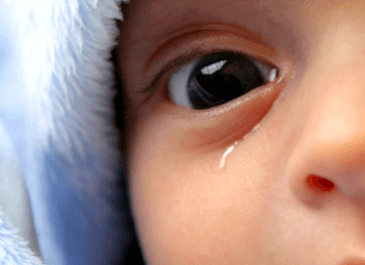SIGNS OF EPIPHORA

Infants come with their own, special share of common baby-related illnesses. But, along with the usual coughs, colds and digestive troubles, parents also have to be constantly aware of signs of problems related to the eye. Babies cannot communicate discomforts in the eye without crying, and tears can camouflage an eye condition involving blocked tear ducts. Look out for these symptoms if you see excessive tearing in your child, and if you suspect something is amiss, have the baby looked at by a physician immediately.
The medical term for this condition is Epiphora. If your baby’s tear ducts are narrower than normal or not fully developed, tears can build up in the eyes. The function of tear ducts is not just to express emotions by crying when angry or hurt, but to channel the tears and drain them into the infant’s nose through tiny openings in the inner corner of the eyelids. However, when proper drainage is blocked, the liquid builds up, causing constant watering, sticky, chronically infected eyes.
Epiphora in babies is usually a temporary condition that resolves itself within 6-12 months. In the meanwhile, you can keep your child comfortable by wiping the eyes gently and regularly with a clean, damp cloth. Massaging the tear ducts also helps in shifting the accumulated tears and encourages the ducts to develop. Here is a video that demonstrates how exactly to perform the massage (known as Criggler Lacrimal Massage):
Criggler Lacrimal Massage
If you notice yellowish-white discharge or swelling and redness, the ducts may be infected. Inward and outward-growing eyelashes can also mimic the symptoms of Epiphoria. In either of these cases, seek pediatric help to understand and mitigate the cause of the problem.
